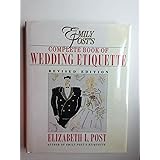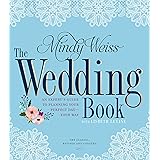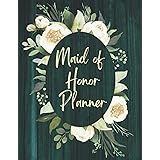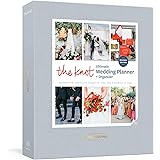What truly makes a wedding unforgettable? Is it the lavish expenditure, the adherence to strict traditions, or perhaps the sheer creativity poured into every detail? As recently highlighted in the captivating *Four Weddings USA* series, where four brides critiqued each other’s nuptials, the answer is as varied as the couples themselves. The spectrum of wedding styles, from Melanie’s meticulously choreographed New Jersey celebration to Nikki’s heartfelt Brooklyn church ceremony, demonstrates that the essence of an extraordinary day is deeply personal. Ultimately, an **unforgettable wedding** is not just about the pomp and circumstance; it is about the genuine reflection of a couple’s journey, values, and dreams.
Crafting Your Unique Wedding Vision: More Than Just a Theme
The journey to an unforgettable wedding often commences with a distinctive vision. A wedding is not merely an event; it is an elaborate narrative, meticulously crafted to tell the unique story of two individuals. Consider Holly, for instance, whose 1940s themed wedding was born from a deep admiration for the era’s elegance and style. Her dream was brought to life through specific invitations featuring a vintage car, indicating a cohesive commitment to her chosen aesthetic. This level of dedication ensures that guests are transported into a distinct world, making the celebration truly immersive.
In contrast, Lauren expressed a preference for a more traditional approach, believing “a wedding has a theme already. It’s called a wedding.” This perspective underscores the idea that for many, the inherent solemnity and joy of marriage are theme enough. Both approaches, however, when executed with thoughtfulness, contribute to a memorable occasion. A personalized wedding is a reflection of the couple’s identity, whether that identity is expressed through a specific historical period, cultural celebration, or simply timeless elegance.
Melanie, a dance instructor, planned her winter-themed interfaith ceremony with an emphasis on organization and a desire to avoid “cheesy” dances like the electric slide. Her ambition for a choreographed dance with her fiancé, Jeff, speaks to a desire for bespoke entertainment that elevates the guest experience. Such personal touches, whether a specific theme or a unique performance, are woven into the fabric of the day, making it distinctively yours. The aim, it can be said, is to construct a celebration that is a true extension of the couple’s personality, rather than a generic template.
Designing Your Narrative: Personalized Wedding Planning
- <strong>Theme Cohesion:</strong> If a theme is selected, its elements, from invitations to entertainment, should ideally work in concert to create a unified experience.
- <strong>Personal Touches:</strong> Incorporating elements that are deeply meaningful to the couple, such as a custom dance or unique ceremonial details, elevates the emotional resonance of the day.
- <strong>Guest Experience:</strong> Thought is often given to how guests will perceive and engage with the chosen theme or personal elements, ensuring comfort and enjoyment are not sacrificed.
Navigating Budget Realities and Expectations for Your Dream Wedding
The financial aspect of wedding planning is frequently one of the most significant considerations, yet, as demonstrated by the *Four Weddings* brides, an **unforgettable wedding** is not solely dictated by its price tag. The budgets revealed in the transcript offer a broad spectrum, from Nikki’s thrifty $10,000 celebration to Lauren’s substantial $70,000 Jewish Orthodox wedding. Each budget, however, supported a unique vision and delivered a cherished experience.
Lauren’s wedding, with its $70,000 budget and 300 guests, featured an extravagant catered kosher dinner, reflecting a cultural emphasis on hospitality and abundant food. For her, the quality and quantity of food were paramount, stating, “Jewish people, we eat. That’s it. I don’t like being hungry at weddings.” This highlights how significant portions of a wedding budget are often allocated to elements that hold deep cultural or personal significance.
Conversely, Nikki, operating with a $10,000 budget, proved that resourcefulness and personal investment can yield equally stunning results. Her plan to transform an old church gym into a “white wonderland” and enlist a friend for catering (“just make sure we don’t run out of chicken”) illustrates a pragmatic yet ambitious approach. Nikki’s conviction that “less is more” and that spending “thousands of dollars” is not always necessary for a beautiful day resonates with many couples. Similarly, Holly’s $15,000 budget for her 1940s dream wedding and Melanie’s $20,000 interfaith ceremony show that significant, personalized events are indeed achievable within varied financial frameworks. It becomes evident that strategic wedding budget allocation, rather than the absolute sum, defines the possibilities.
Smart Wedding Budgeting for Impact
When planning a wedding, careful thought is put into how funds are best utilized to maximize impact. For instance:
- <strong>Prioritization:</strong> Couples often decide which elements are most important to them (e.g., food, venue, entertainment) and allocate a larger portion of their wedding budget there.
- <strong>Creative Solutions:</strong> Smaller budgets can foster ingenuity, such as DIY decor, leveraging personal networks for services, or opting for less conventional venues.
- <strong>Transparency:</strong> Being upfront about budget limitations allows vendors and planners to suggest suitable options and avoid unnecessary expenses.
Embracing Tradition and Personal Expression in Your Wedding Ceremony
A wedding ceremony is a sacred cornerstone of the celebration, often rich with cultural and personal significance. The *Four Weddings* narrative beautifully showcases how tradition can be honored while personal expression shines through. Melanie’s interfaith ceremony, blending Catholic and Jewish cultures, is an excellent example of couples navigating diverse backgrounds to create a harmonious union. Such ceremonies are intricate tapestries, woven with respect for both heritages, and they require thoughtful planning to ensure all aspects are meaningfully represented.
Lauren’s Orthodox Jewish wedding, with its strict customs, including the unique tradition of not seeing her groom for a week prior, exemplifies a deep commitment to religious practice. These customs, while potentially challenging to guests unfamiliar with them, are integral to the couple’s spiritual journey and are treated with utmost respect. It is often understood that guests are expected to embrace and honor these traditions, sometimes with guidance provided to ensure their comfort and understanding.
Nikki’s Baptist church wedding, with an African drum procession leading from her building to the sanctuary, illustrates a powerful fusion of faith, heritage, and personal flair. Her “Winter White Angels” (cherished women in her life) escorting her into the church adds another layer of profound personal meaning. This dynamic blend ensures the wedding ceremony is not just a formality but a deeply felt, culturally resonant experience. Nikki’s contemplation of singing as she walks down the aisle further emphasizes the desire to infuse raw emotion and personal talent into her special day.
Harmonizing Cultural Wedding Traditions
Navigating cultural wedding traditions and personal desires can be a delicate art. Certain considerations are typically made:
- <strong>Inclusive Planning:</strong> For interfaith or multicultural weddings, discussions are often held with both families and religious leaders to ensure rituals are respected and incorporated thoughtfully.
- <strong>Guest Education:</strong> Information regarding specific traditions or customs may be provided to guests in advance, ensuring they can participate respectfully and comfortably.
- <strong>Symbolic Gestures:</strong;<gt; Personal elements, like Nikki’s drum procession or Melanie’s choreographed dance, are integrated to symbolize the couple’s identity and journey.
The Art of the Ceremony & Reception: Defining the Wedding Experience
The atmosphere of a wedding is often defined by the choices made for the ceremony and subsequent reception. From musical selections to culinary delights, every element contributes to the overall wedding experience. Melanie, consciously avoided traditional “cheesy” wedding dances, highlighting a desire for refined entertainment that still encouraged participation. This approach ensures that the ambiance is sophisticated yet lively, preventing any dull moments. It is commonly believed that the right soundtrack can elevate a celebration from ordinary to exceptional.
Contrastingly, Holly’s decision to include the Hokey Pokey at her wedding suggests a carefree, fun-loving spirit. This demonstrates that there is no single “correct” approach to wedding entertainment; what resonates most is authenticity to the couple’s personalities. The diversity of musical choices, from live singing to DJ selections, allows for a truly personalized celebration that keeps guests engaged and energized throughout the event.
Food, as underscored by Lauren, plays a critical role in the guest experience, particularly for large gatherings. Her meticulous planning for a catered kosher dinner for 300 guests reflects a profound understanding that a memorable meal is a cornerstone of hospitality. The quality and abundance of food are often cited as key indicators of a successful wedding reception. However, Nikki’s confidence in a friend catering her wedding with a modest budget reminds us that passion and care in food preparation can triumph over extravagance. Ultimately, whether it is a lavish buffet or a lovingly home-cooked meal, the focus is on providing sustenance and enjoyment for those sharing in the special day. The setting itself, from Nikki’s transformed church gym to Lauren’s “beautiful synagogue,” further shapes the perception of the event.
Enhancing the Wedding Reception Experience
To ensure a captivating wedding reception, various aspects are carefully curated:
- <strong>Curated Music:</strong> Playlists or live bands are selected to reflect the couple’s taste and encourage guest participation without resorting to generic choices.
- <strong>Culinary Excellence:</strong> Food and drink options are considered for quality, presentation, and alignment with the couple’s cultural preferences or dietary needs.
- <strong>Thoughtful Layout:</strong> The reception space is designed to facilitate flow, conversation, and dancing, contributing to a comfortable and joyous atmosphere.
Bridal Style: From Classic to Custom on Your Wedding Day
The bridal gown is, for many, the quintessential symbol of a wedding day, embodying the bride’s personal style and, at times, cultural values. Lauren’s wedding dress, described as “very traditional, very elegant, a little conservative,” was meticulously modified to reflect her Jewish Orthodox customs, with added sleeves and a raised neckline to ensure modesty. This demonstrates that bridal fashion extends beyond mere aesthetics, often serving as a powerful expression of faith and identity.
Each bride in the *Four Weddings* series, from Nikki who was described as “glowing” in her simple dress, to Melanie’s “fantastic” appearance, presented a distinct interpretation of bridal beauty. The brown taffeta strapless bridesmaids’ dresses were also noted for their beauty, indicating that the overall bridal party’s appearance is often given careful consideration. While fashion trends come and go, the timeless appeal of a dress that truly resonates with the bride’s inner self remains constant. It is believed that when a bride feels beautiful and authentic in her gown, this confidence radiates, making her entrance even more impactful.
The choice of accessories, hairstyles, and overall presentation are all integral components of the bridal look. They contribute to the visual narrative of the wedding, complementing the chosen theme and amplifying the bride’s individual radiance. The focus is always on creating a harmonious ensemble that perfectly captures the magic of the moment.
Reflecting Identity Through Bridal Fashion
- <strong>Personal Expression:</strong> The wedding dress is often chosen to reflect the bride’s unique style, whether it is modern, vintage, traditional, or a blend.
- <strong>Cultural & Religious Significance:</strong> Gowns are often adapted or chosen to align with specific cultural or religious requirements, adding layers of meaning to the attire.
- <strong>Comfort & Confidence:</strong> Beyond aesthetics, the ability of the bride to move freely and feel comfortable in her dress contributes significantly to her enjoyment and demeanor on the wedding day.
Ultimately, the journey to an **unforgettable wedding** is less about adhering to external expectations and more about honoring the unique love story of the couple involved. Whether it’s through careful choreography, vintage themes, deep-rooted traditions, or resourceful budgeting, the most cherished wedding experiences are those that authentically celebrate the individuals, leaving a lasting impression on everyone present.











